The Softwood Lumber Board (SLB) and USDA Forest Service have revealed the five winning proposals for the 2023 Mass Timber Competition: Building to Net-Zero Carbon. The announcement, made at the Chicago Architecture Center, was held in conjunction with the center’s ongoing mass timber exhibition, REFRAMED: The Future of Cities in Wood. The winners will receive just over $2.2 million in total funds for their architectural designs—all in various stages of completion—that highlight mass timber’s application towards the reduction of carbon footprints within the built environment. The proposals were developed in collaboration with WoodWorks | Wood Products Council, a nonprofit that provides free technical support for the design, engineering, and construction of mass-timber commercial and multifacility buildings.
Ryan Flom, chief marketing officer with SLB, noted in a statement that the winning cohort “will not only provide much needed housing and gathering spaces for their communities, but they will also demonstrate viable paths for other teams to build for well-being, commercial adoption, resilience, and a minimal carbon footprint.”
The guidelines for the second annual competition, which was announced in March, were broad but touched on key points of the mass timber industry. SLB and Forest Service asked participants to demonstrate the material’s commercial viability, and design and construction practicality, all while using wood sourced from sustainably-managed forests, ideally harvested and manufactured in the United States. Jurors in this year’s competition ranged from leading structural engineers and architects to developers and contractors. They included Jennifer Bonner, founder, MALL; Chandra Robinson, principal, LEVER Architecture; Lauren Wingo, senior engineer, Arup, and Christine Zinkgraf, senior project executive, Lease Cutcher Lewis, and several others.
CODA Detroit
Design architect, architect of record: OOMBRA Architects
Client/developer: Brush Park Properties, LLC / InDevelopment Partners
Structural engineers: JDH Engineering
Mass Timber Engineer: Britt Peters and Associates
General Contractor: AM Higley
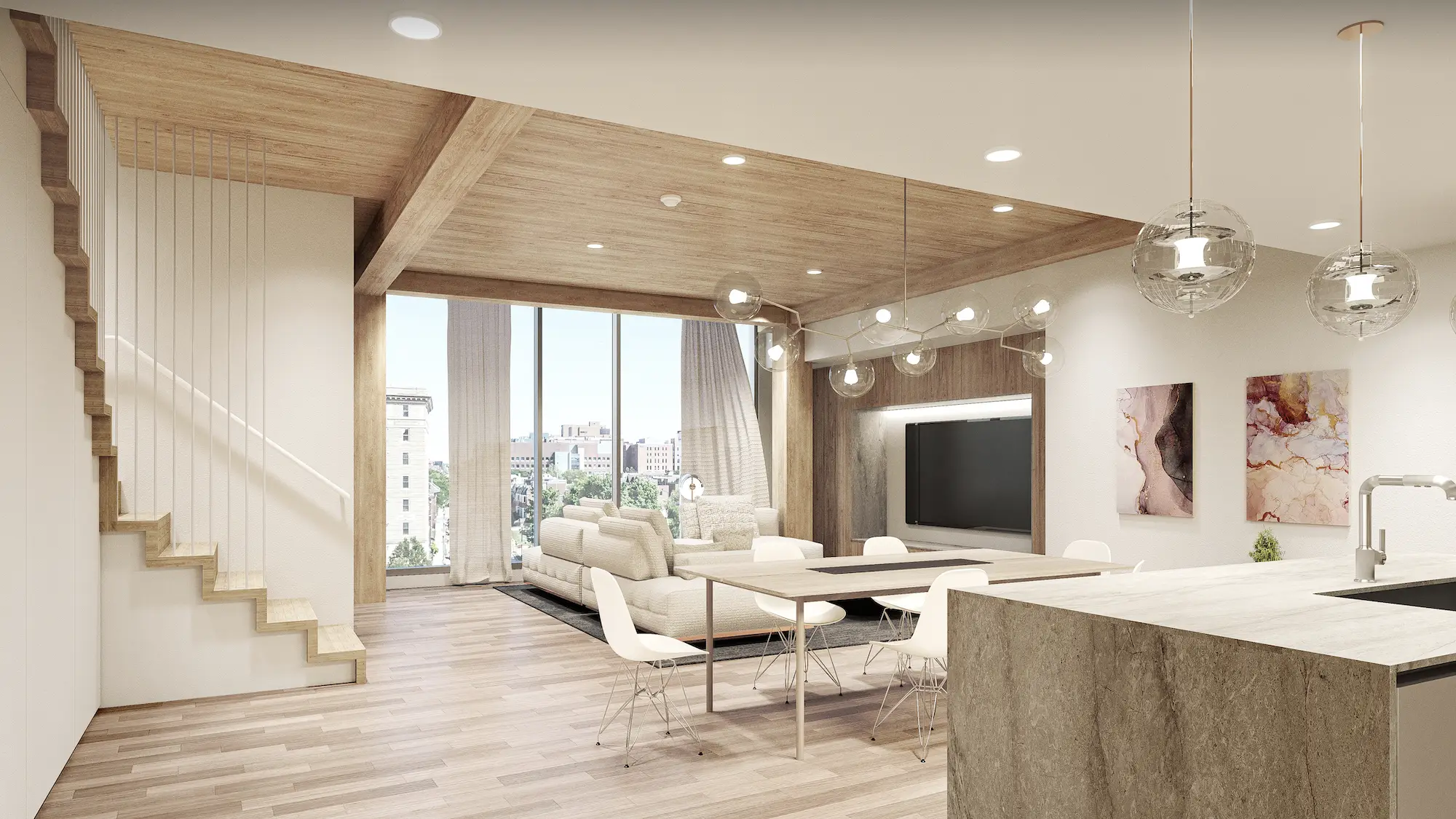
CODA Detroit, interior. Image by OOMBRA Architects
This five-story, 95,000-square-foot mixed-use residential building located just outside of downtown Detroit will rise from the foundation and first floor of a historic carriage house dating from the 1880s, and feature exposed glulam columns and beams, and CLT floorplates. Uses will range from a two-story bar and lounge embedded within the carriage house walls, connected to a new one-story restaurant, and, above, 5,000 square-feet of office space and 10 apartments and lofts. Those new additions will be shrouded in a wood scrim and brick screen enclosure.
Up@310 Lofts
Design architect: Lignin Group in collaboration with Tim Olson
Architect of Record: Banwell Architects
Client/Developer: 310 Marlboro St., LLC
Mass Timber Engineer: Entuitive
General Contractor: Lignin Group
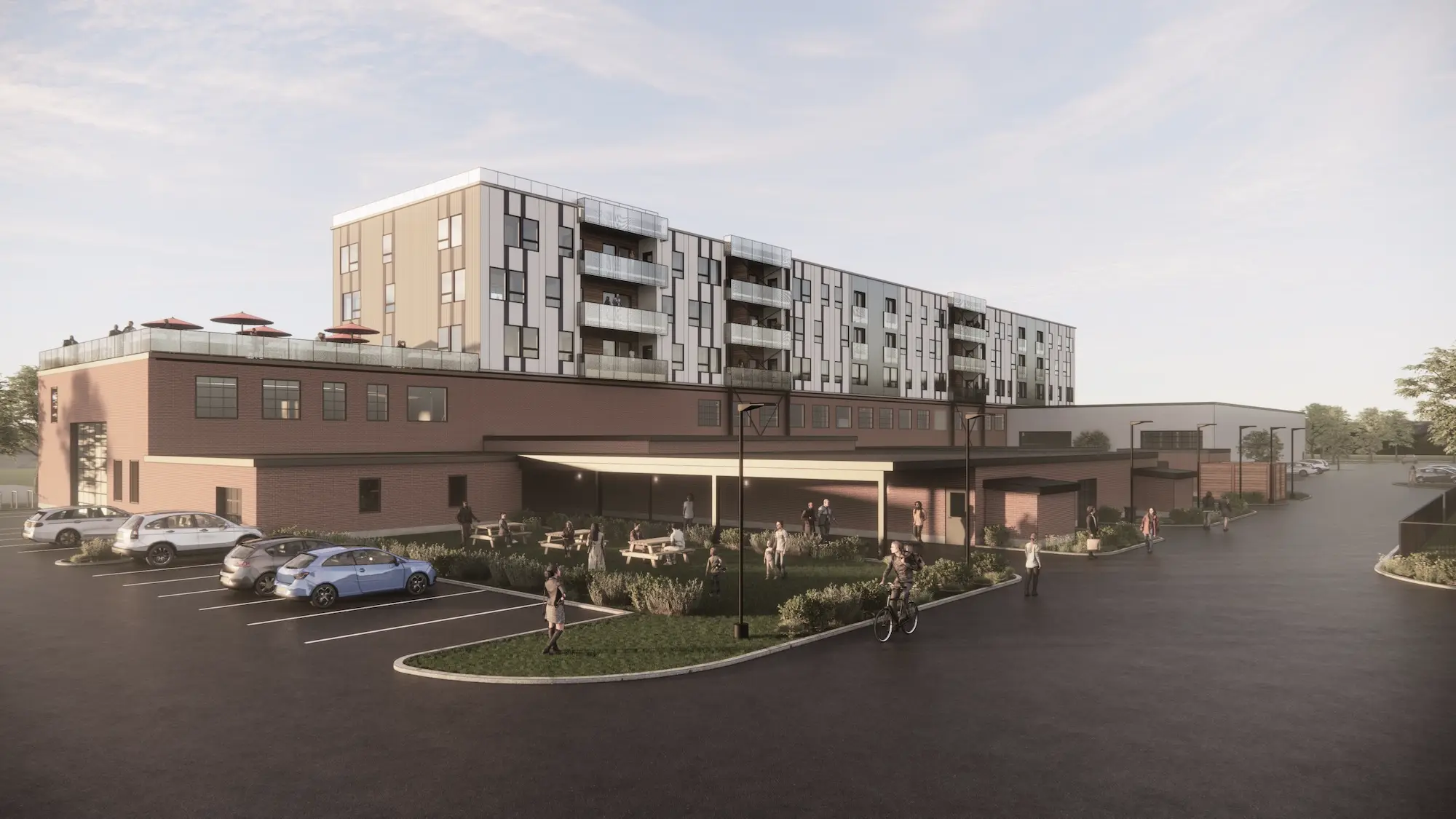
UP@310 Lofts. Image by Candace Kao
Located in Keene, New Hampshire, this 62,250-square-foot project will see the addition of three stories of housing, for a total of 57 units, to an existing two-story micro-business incubator located within a former paintbrush factory built in 1947. The project consists of relatively standard post-and-beam glulam and CLT floor plate construction, enclosed by fiber cement siding panels and triple-pane windows. Mass timber was used for the vertical addition due to its lighter weight, placing less load on the existing foundations, and ease of assembly. A new energy-efficient biomass boiler system and heat pumps will replace the existing building’s aging oil and propane heating system while a 143kW solar array will further reduce energy loads.
Via/Northwest Arkansas Industrialized Construction program
Design Architect: A226
Architect of Record: Modus Studio
Client/Developer: Blue Crane LLC
Structural Engineer: Tatum, Smith, Welcher; Aspect Structural Engineers
General Contractor: Arco Construction
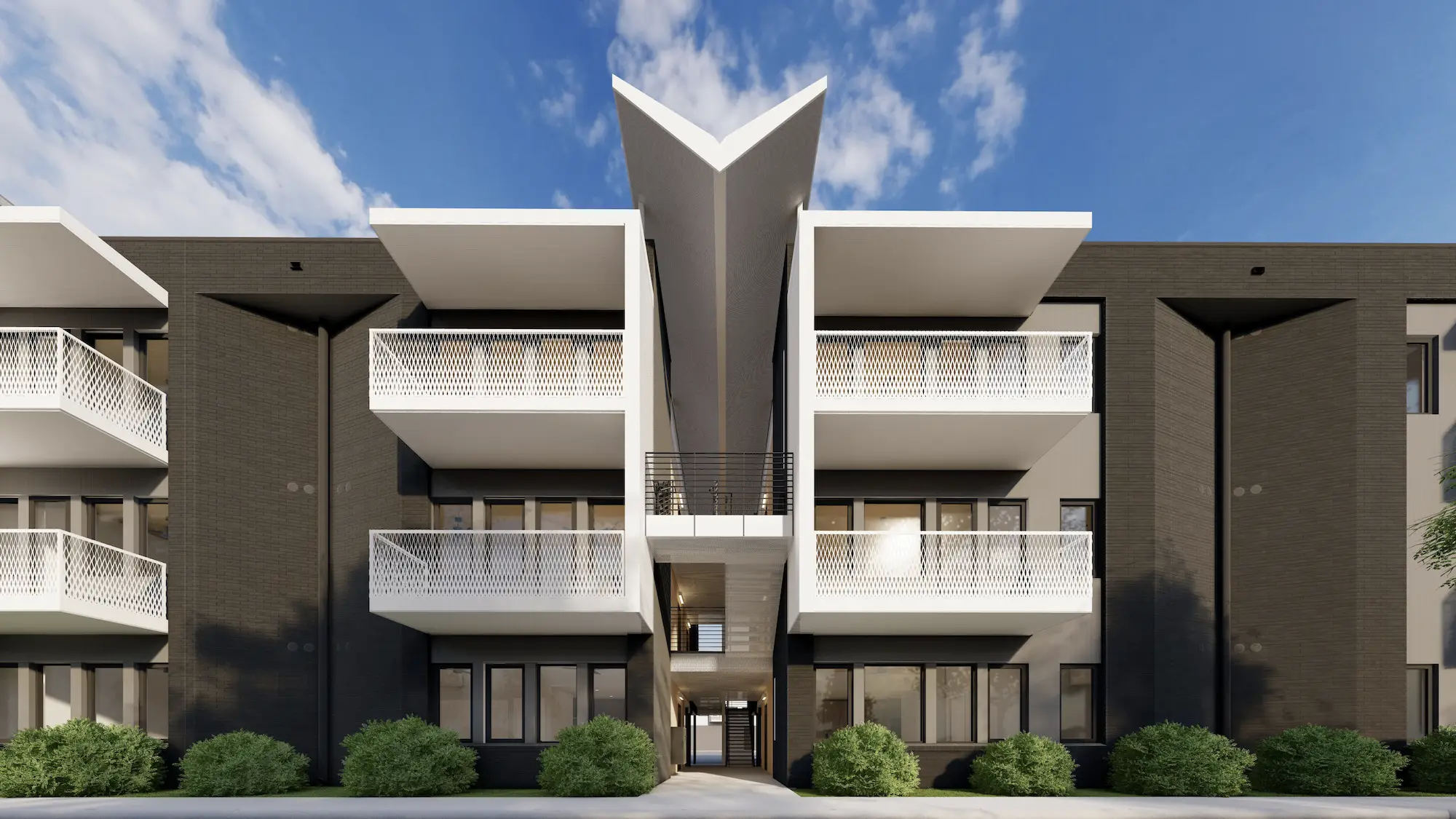
Via/NWA, exterior. Image by Modus Studio
Bluecrane Development Group, the real estate arm of Runway Group, a Walton family-backed holding company in Arkansas, is leading the development of Via, an approximately 2.5-acre mixed-use development in downtown Springdale. The project features four separate apartment buildings with a total of 131 residential units—affordable and market-rate—and nearly 12,500 square feet of commercial space, along with the reconstruction of nearby Luther George Park. Two of the buildings will be built with conventional wood framing, while the others will be composed of a standardized kit of parts, including CLT panels and prefabricated bathroom modules.
The Village SF Wellness Center
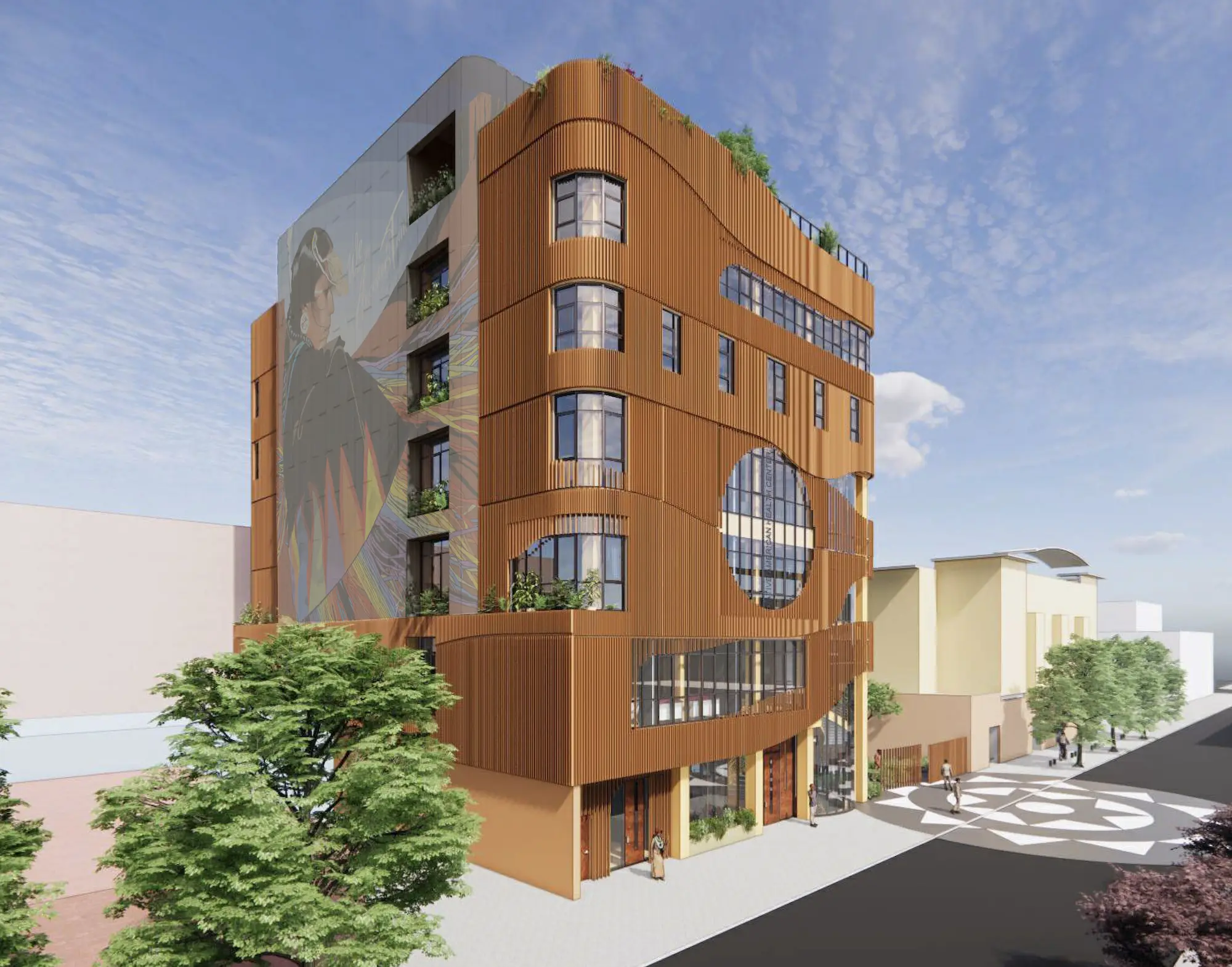
The Village SF Wellness Center, exterior Image by PYATOK architecture + urban design
Design Architect: PYATOK architecture + urban design
Architect of Record: PYATOK architecture + urban design
Client/Developer: The Friendship House Association of American Indians
Structural Engineer: DCI Engineers
General Contractor: Cahill Contractors
Woolsey Gardens
.webp)
Woolsey Gardens, exterior. Image by Soloman Cordwell Buenz
Design Architect: Solomon Cordwell Buenz
Architect of Record: Solomon Cordwell Buenz
Client/Developer: Northern California Land Trust
Structural Engineer: Tipping Structural Engineers
Preconstruction Services: Swinerton Builders, Timberlab
Woosley Gardens, in Berkeley, California, is a mixed-use eight-story building with affordable rental and cooperative residential units along with community and office spaces. The design includes CLT floorplates and glulam post-and-beam elements clad with a brick rainscreen and natural wood. The mid-rise building is topped by a photovoltaic array, that, combined with a heat pump and waste heat recovery system, will help the project earn LEED Platinum certification.
Learn more about the award, the selected projects, and their respective carbon impacts at SLB’s website.
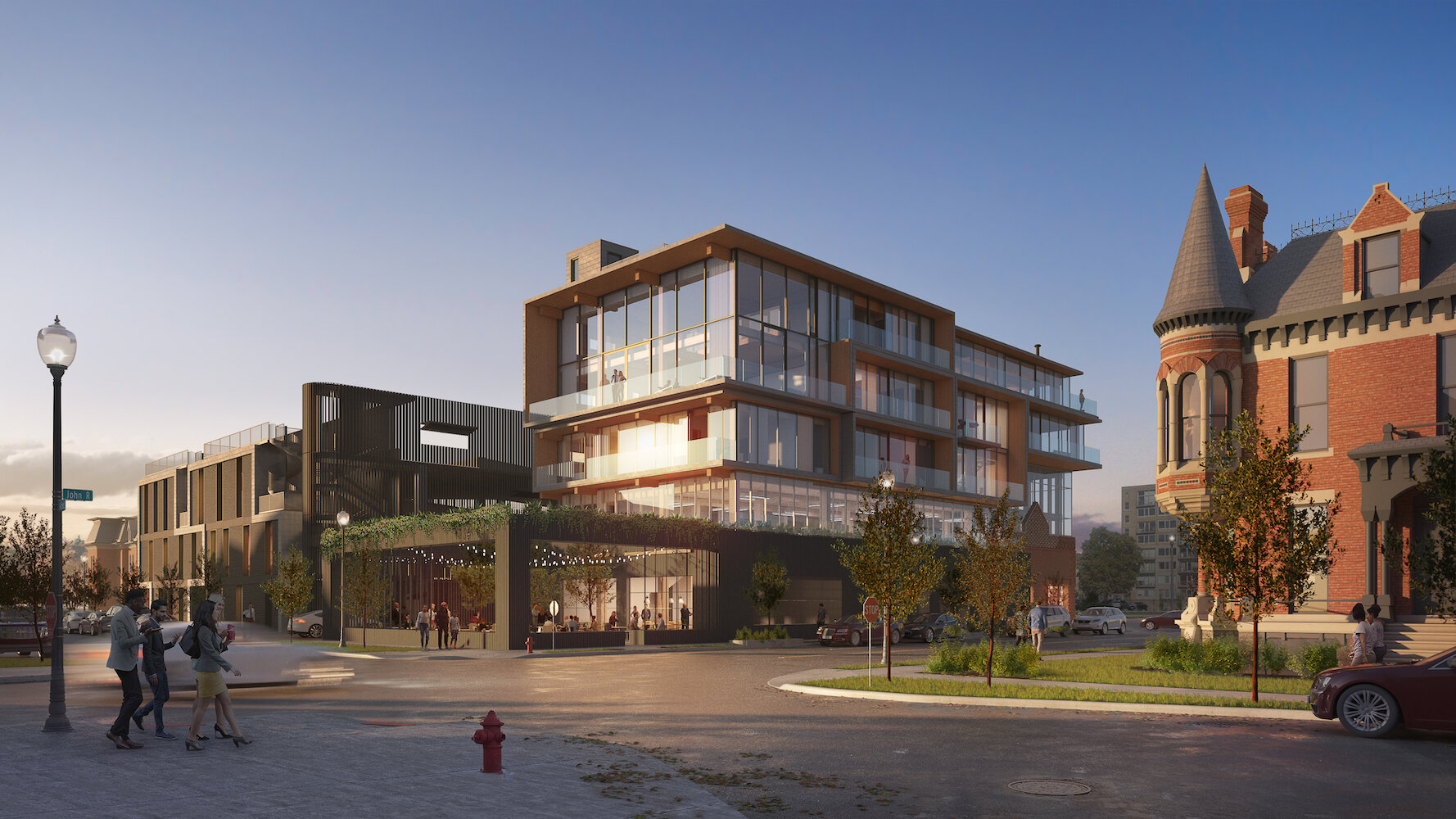




Post a comment to this article
Report Abusive Comment